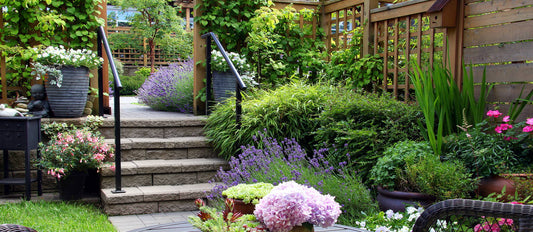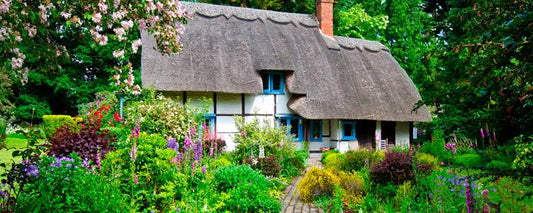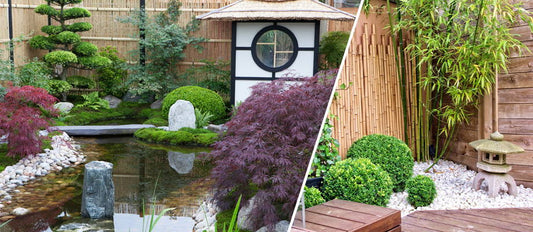A widely used natural ground cover plant for shady areas in your garden is Ivy (Hedera helix). This fast growing evergreen develops long shoots with small adhesive rootlets. Wherever these touch the ground they transform into regular roots. You could multiply the plant simply by cutting the shoot. Plant some 4 plants per square meter and within one season the area will be covered with green or variegated foliage. 'Goldheart" looks particularly good in the shade. The leaves of this variegated ivy have a bright yellow heart that brightens up those darker spots in your garden. The ivy's eternal youth is preserved by cutting the plant back regularly. A branch of ivy transforms an ordinary bunch of flowers into a bouquet.
A stunning effect can be obtained by leaving small groups of narcissi to naturalize between the ivy. The white or yellow flowers form a fantastic contrast with the shiny green foliage in spring. To enjoy the same display in summer, try planting some summer-flowering white narcissus "Ehrlicheer), or the white and yellow "Avalanche" with 9 to 12 flowers on each stalk.!
Pachysandra or Japanese Spurge is an evergreen half-shrub that thrives in dry, shady places like under shrubs and trees. Although the plant does tolerate brighter light, it will also require more water there. The pretty oval-shaped, serrated leaves are a fresh green with a leathery appearance. The plant spreads itself by growing rhizomes on which 30 cm-high stalks develop and form a small clump. To obtain a thick carpet you need to plant about 6 plants per square meter. Does plant does hardly require any pruning. From April onwards small insignificant creamy to pink coloured flowers appear. Try planting some naturalizing spring bulbs between the pachysandras. It will really brighten up your garden.
Flowering ground cover plants
Very easy to grow and creating an interestingly colourful effect is Red Stonecrop (Sedum 'Schorbusser Blut'). This variety thrives in any type of soil and spreads itself into a big, fiery red flowering carpet. The leaves of this 10 cm high creeper are a purply shade. In summer it producer magenta red flowers. The plant can be multiplied by tearing and any parts that protrude too far can easily be removed. This plant is very suitable for growing under trees or shrubs with roots at the soil surface. A ton-sur-ton effect is obtained by planting red stonecrop beside the decorative shrub 'Berberis thunbergii Atropurpurea' which has bronze red foliage.
The naturalizing, beautifully fragrant Lily of the Valley (Convallaria majalis) does very well in humous, fertile soil types. As long as the plant is left to grow in a shady or half-shady spot it spreads into a thick fragrant carpet. The lily spreads itself by forming rhizomes from which the pointy green leaves pop from the ground up at regular intervals. The plant can grow up to 20 cm high and, if left undisturbed, it can flower for tens of years on end. The delicate stalks with the shiny white bell-shaped flowers that form a lovely contrast with the foliage and spread a fantastic scent appear in May. You could try digging up some plants and pot them up to enjoy them indoors. After flowering they can be returned to the garden. Lilies make beautiful cut flowers too. Mixed with some ivy they form a pretty little May bouquet. After flowering, however, the plant develops nice looking and sweet tasting berries that are highly poisonous. This fact makes this lovely plant unsuitable for garden where children play!




